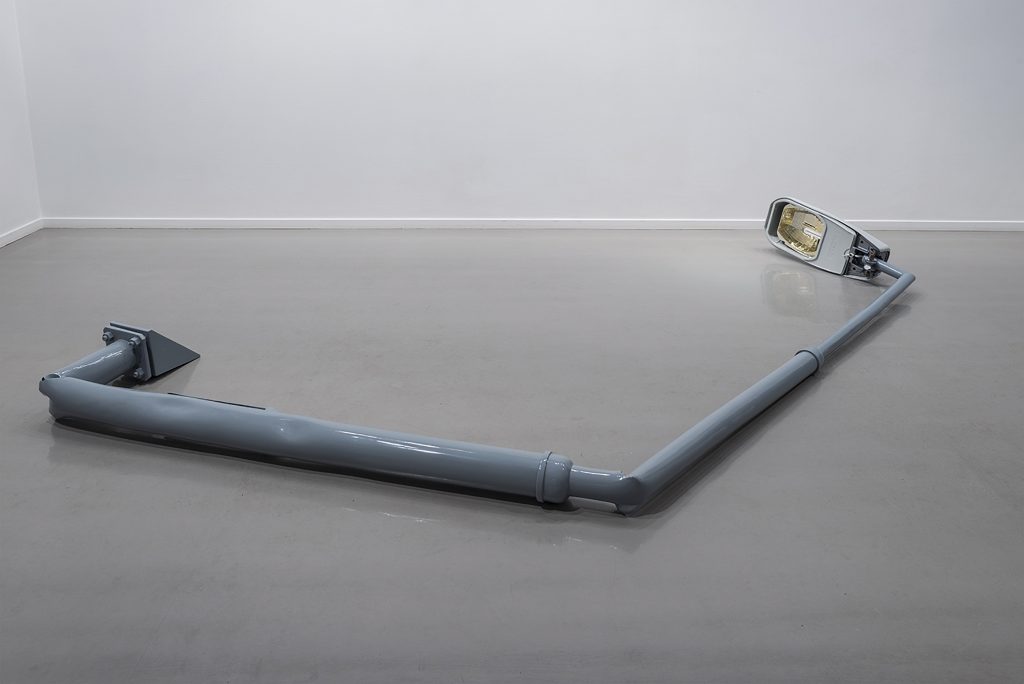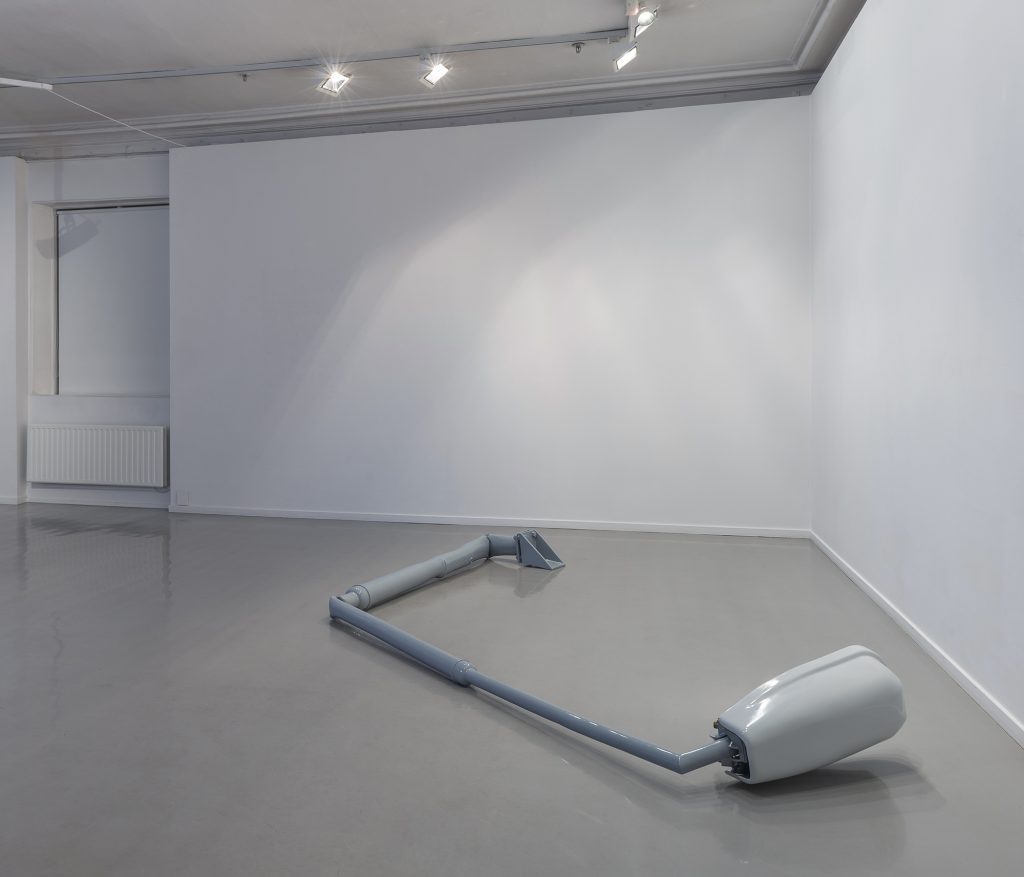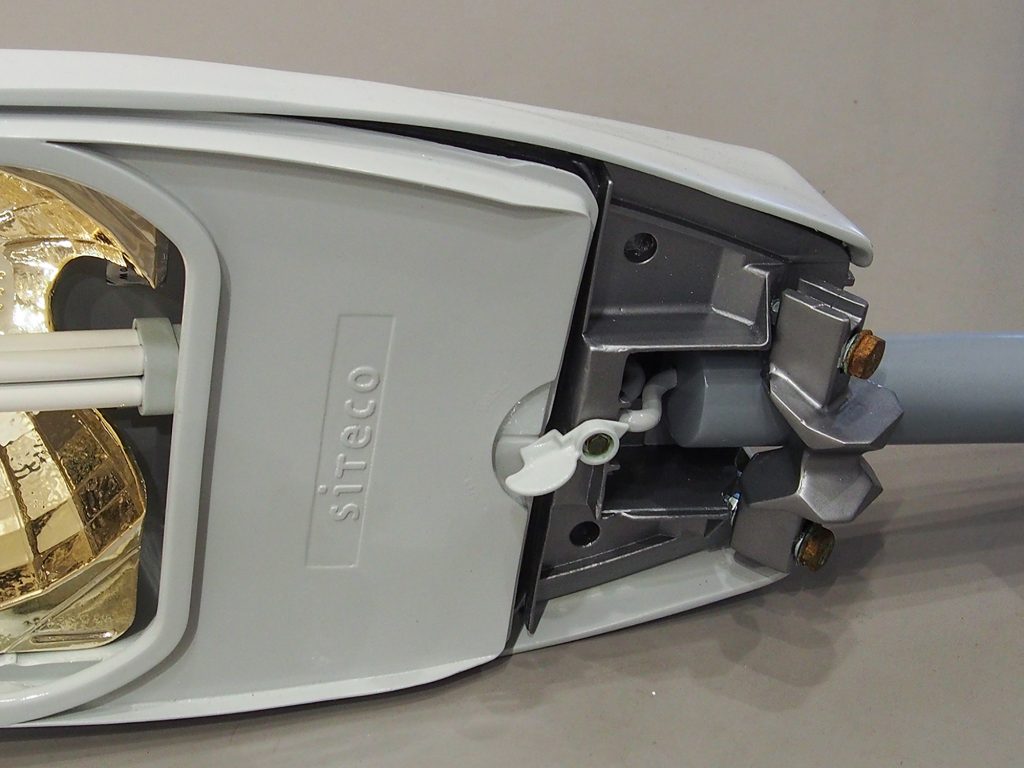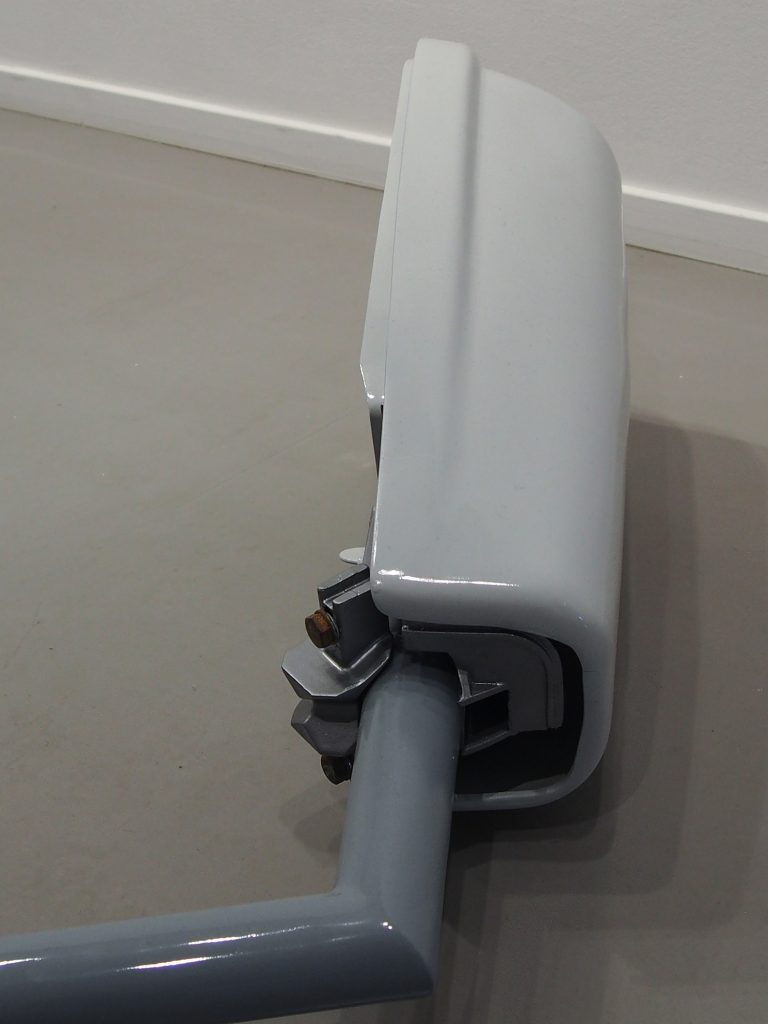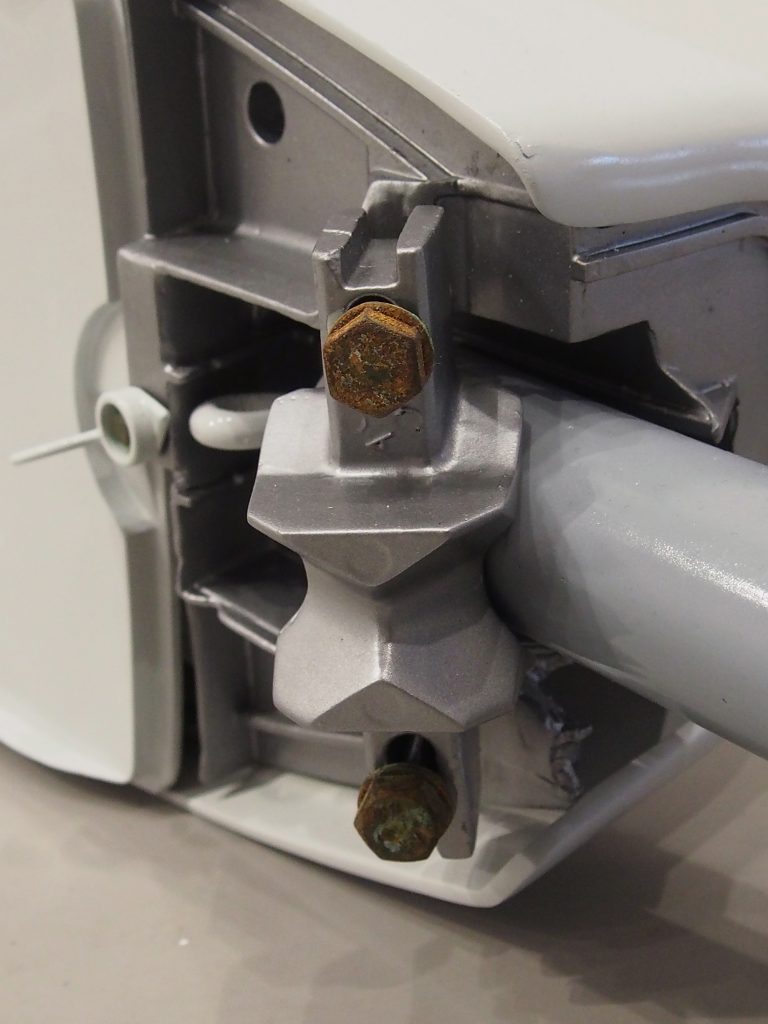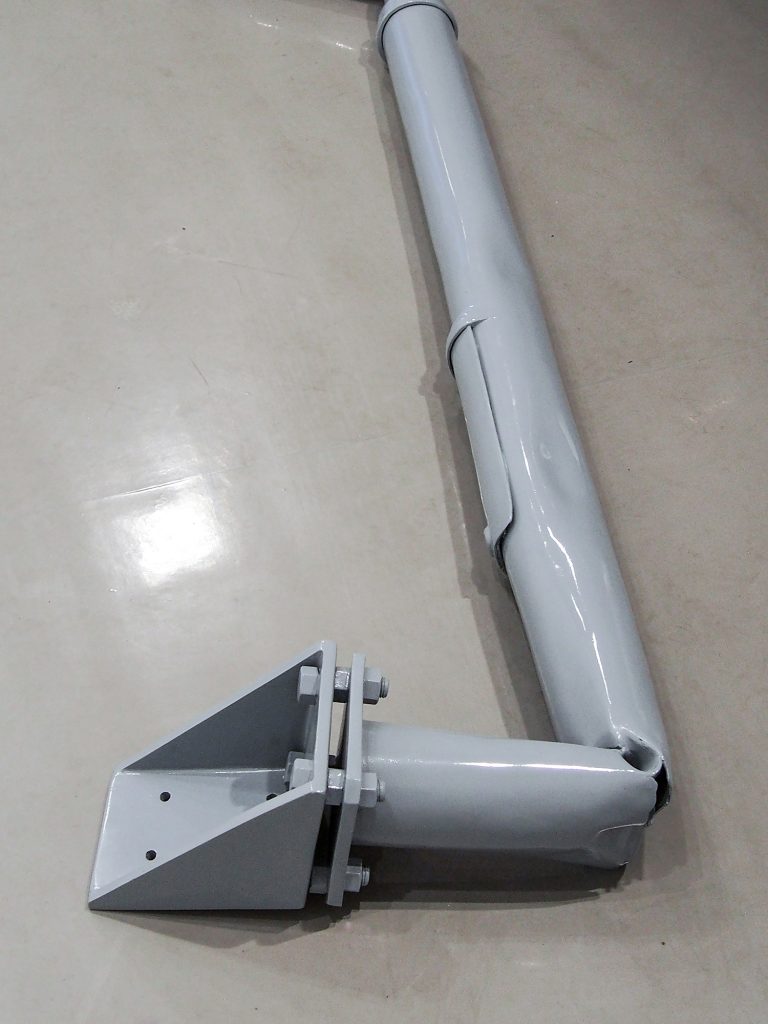Sculpture, 2015
Chrome paint, paint, epoxy and plastic F18
Dimensions: 200 x 60 x 80 cm
Image view: Oslo Kunstforening, Sparebankstiftelsen DNBs stipend 2015, Oslo, Norway.
‘In the ruin history has physically merged into the setting. And in this guise history does not assume the form of the process of eternal life so much as that of irresistible decay. Allegory thereby declares itself to be beyond beauty.’ Walter Benjamin
I have always been interested in the possibilities art provides when subjects and objects are combined which allows, indeterminate interpretations as a kind of infinite book.
I found a street lamp in a dumpster, it was completely destroyed. This type of lamp is used for public illumination, streets, parks, highways. For me, these lamps are a symbol of the common space, of public space. These “public” lights have an attached cultural reference for me, benevolent to us all. In Latin America ”give light” ”dar a luz” is an expression that refers to the act of giving birth.
I took the lamp to my studio and I then set about making a cast and from that a copy. I use the word “copy” in my work as a cynical and cold way to analyse a situation. As a copy, archive, and witness. Religion, emigration, and inequality in society are issues of my preference. I use narrative collage, which adds different layers and levels of content to the construction of the work.
Likewise, in the making of my pieces, I choose the materials meticulously, thus the material becomes part of the narrative. The piece I have selected is an example of this conjunction of material and meaning that defines my work.
The selected materials; epoxy, fiberglass, f18 (plastic), paint and chromo paint are opposite to ordinary materials that are required for this type of construction. Fragile instead of robust, these materials are not selected in terms of functionality but in terms of how they provide meaning and enrich the content of the sculpture.
Dar a Luz is an ironic deconstruction of a visual element, displayed in a closed gallery space where its functionality dies and opens the possibility to become a purely aesthetic form. This mutilated “lamp” exposes its uselessness to the viewer, static and huge, giving off an impression that the object is much heavier than it is. This makes the viewer doubt its true weight.
Our experiences organize what we see, and arrange that information as knowledge. We have been taught to believe that what is there, in a public space, is what is best for us. We have learned to believe in what we see and trust that things are as they appear. But I am interested in seeing what happens when things are not what they appear. What happens when an object’s functionality is other than what we think it should be? When did the materials play with conceptions we see as given? What we see vs. what we believe in vs. what we trust. The differences between the lamp found in the street and the copy of the lamp placed in the gallery is a reminder of the belief we have in the things themselves.
East Oslo needs light, both literally and figuratively. The new wave of commerce moving into Bjørvika can either shed light on these matters or darken them to oblivion. Art can help enlighten this difficulty guiding the wave of new residents to an acknowledgment of the reality of the area.
